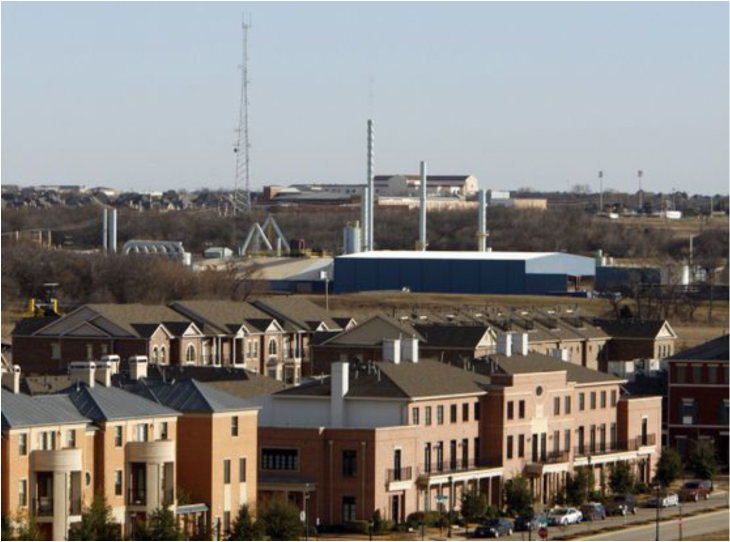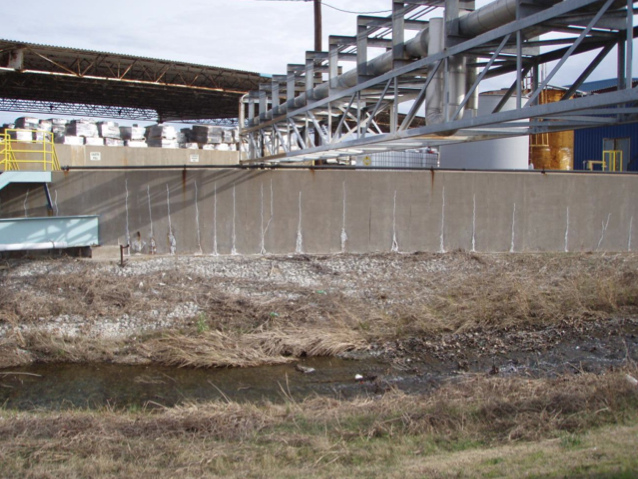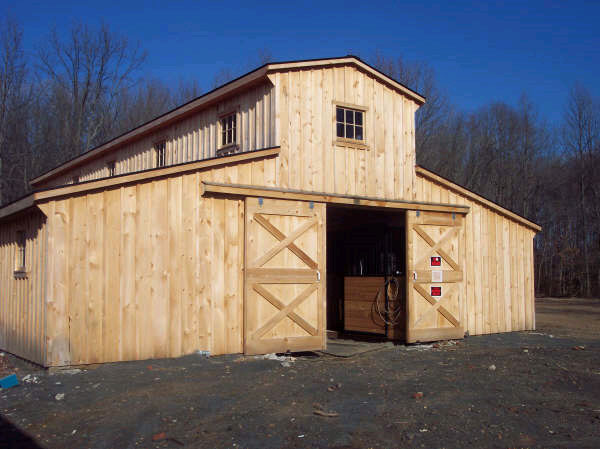Frisco
Crohn’s Disease Linked to Lead Smelting Pollution
 Ulcerative colitis and Crohn's Disease are similar debilitating diseases of the digestive system which can include symptoms like severe abdominal pain and diarrhea. About a million and a half people in the US have the condition, which many researchers now believe to be linked to environmental causes.
Ulcerative colitis and Crohn's Disease are similar debilitating diseases of the digestive system which can include symptoms like severe abdominal pain and diarrhea. About a million and a half people in the US have the condition, which many researchers now believe to be linked to environmental causes.
A Harvard Medical School study recently added to the evidence of such a link when it identified a cluster of suffers in extreme northern Washington state who live in proximity to an old lead and zinc smelter on the other side of the US-Canadian border. That smelter has been the source of complaints about pollution in the US as far back as the 1930's, when compensation for pollution damage was recommended by the Border Commission. Harvard doctors, including lead researcher Dr. Josh Korzenik, asked approximately 120 former and current residents of Northport, Washington to take a health survey. 17 of them had Ulcerative colitis or Crohn's.
“That’s about 10 to 15 times what we’d expect to see in a population the size of Northport,” said Korzenik, director of the Crohn’s and Colitis Center at Brigham and Women’s Hospital, one of Harvard Medical School’s teaching hospitals. “I’m not aware of any other cluster like it.”
But that could be because no one has looked. What kind of health survey logistics would it take to bring a similar study to Frisco, where emissions from the Exide lead smelter have been coating the surrounding areas for almost 50 years? Who would think that these symptoms could be linked to smelter emissions? Respiratory problems, IQ and developmental issues, even deafness, but not chronic stomach ailments. This is just one more disease that Frisco residents will have to try to determine if the Exide smelter is leaving behind as part of its toxic legacy.
Four Years Later, State Gets Around to Issuing Clean Air Plan for Exide That Won’t Apply
In 2008, the EPA issued a new lead-in-air standard for all U.S. lead smelters.
In 2011, the Texas Commission on Environmental Quality finaly submitted its first proposed plan to meet that new standard in Frisco, Texas, host of the Exide lead smelter. It was rejected as inadequate by EPA on the same day it was submitted.
In May of 2012, the City of Frisco and Exide reached a settlement that commits the company to ceasing the operation of its Frisco smelter on December 31st, 2012.
Last week, the Texas Commission On Environmental Quality released its second plan to meet the 2008 EPA lead-in-air standard at the Exide smelter in Frisco. Its effective date is December 31st, 2014, or two years after Exide will have closed per its agreement with the City of Frisco.
The plan and the accompanying Agreed Order doesn't incude any fines or enforcement measures that address the dozens of violations detailed by TCEQ inspectors at the Exide smelter just last year. Nor does it address the closure and adequate clean-up of the smelter once operations cease.
Between 2008 and the end of this year, Exide will have released an estimated 14,000-16,000 pounds of lead into the air in Frisco.
If you're thinking that this TCEQ planning document is irrelevant, you'd be pretty close to summarizing not only this episode, but decades of state oversight. And yes, this is why it's important to have citizens suing Exide themselves to enforce the law rather than Waiting for Godot TCEQ.
“How your great grandmother’s chemical exposures may affect you”
 In a study published this week, "rats exposed in the womb to five common environmental pollutants passed on DNA-changing attributes that persisted in causing ovarian cancer three generation removed from the original exposure."
In a study published this week, "rats exposed in the womb to five common environmental pollutants passed on DNA-changing attributes that persisted in causing ovarian cancer three generation removed from the original exposure."
It's another example of "epigenetics" – when harmful environmental exposures to one generation can skip a generation or two and show up as health effects decades later.
According to the new study, the five pollutants reprogram how DNA is expressed in the developing fetus' eggs, setting the stage for ovarian disease later in their life.
If you're a Vet, the news is worse. The U.S. Department of Defense helped select the pollutants based on potential exposures in military personnel. They included vinclozolin, a fungicide that's used in the wine industry; a pesticide mixture including permethrin and DEET; a plastic mixture including bisphenol A (BPA) and two widely used phthalates (DEHP and DBP); the industrial byproduct dioxin; and a hydrocarbon mixture called "jet fuel," which is used to control dust on road surfaces.
Researchers at Washington State University exposed pregnant rats to one of five different chemicals alone or in mixtures during a critical time of pregnancy when their daughter pups' eggs were developing. The pups were then mated with males from the same treatment group, and the resulting pups were bred yet again. Only the original generation of pregnant rats had been exposed to the chemicals. The adult daughters and great granddaughters of the dosed animals (called the F1 and F3 generations) were examined for ovarian disease.
In all exposure groups, both the daughter (F1) and great-granddaughter (F3) mice had fewer egg follicles in their ovaries compared to controls, indicating a reduced pool of available eggs. Both generations – but particularly the F3 animals – also had an increased number of ovarian cysts compared to controls.These findings are characteristic of Polycystic Ovarian Syndrome (PCOS) and Premature Ovarian Insufficiency (POI), which are believed to affect 18% of all women.
Other diseases, including allergies and asthma; liver, gastric, prostate and colorectal cancer; and psychiatric disorders are thought to have an epigenetic component. This is the first time that epigenetic changes have been shown in association with ovarian disease. This proof-of-concept study used higher doses of chemicals than what people would typically encounter. Future work is needed to investigate whether lower, more environmentally relevant chemical levels also affect ovarian disease across generations of the rodents.
Locally, we're surrounded by sources of one or more of these pollutants, especially phthalates, BPA, dioxin, and hydrocarbons. BPA is the subject of a lot of media attention and just yesterday, the FDA banned its use in sippy cups for infants. Frisco's Exide lead smelter has been a top ten dioxin polluter in Texas over the last decade. The cement plants in Midlothian are also large industrial sources of dioxin, and new permits to burn more "non-hazardous" wastes that turn into hazardous emissions only ensure that will remain the case. On the ground, internal combustion engines from cars and the natural gas industry facilities in the Barnett Shale soak us in hydrocarbons.
Despite the documentation of the epigenetic effect of certain pollutants in recent years, this impact has not yet been incorporated into any risk assessment of a polluting facility by any environmental or public health agency in the U.S. We may be planting the seeds for epidemics of all kinds in the next 20-50 or more years, and it's all perfectly legal now. Once again, the science is way out in front of the regulations. That's why citizens must arm themselves with the latest research. You won't be getting updates on this stuff from EPA or TCEQ. That's also why it's ridiculous for anyone to speak about the "over-regulation" of polluters in this country. We're nowhere close to understanding what the long term consequences are of our actions in allowing so many chemicals into the environment to mix and match with our own biology. In this larger public health sense, pollution is still very much under-regulated in the United States.
Downwinders and Frisco Unleaded Send Notice: We’ll Enforce the Law if EPA Doesn’t
Our news release says it all:
Citing a lengthy list of unresolved federal violations, citizen groups tired of waiting for EPA to enforce the law at the Exide lead smelter in Frisco are gearing up to do it themselves.
Members of Frisco Unleaded and Downwinders at Risk gathered at 9:30 this morning in front of the Frisco Post Office on Stonebrook Parkway to mail "Notice of Intent" letters to Exide corporate representatives, EPA, and state environmental administrators. The action initiates the official 90-day notice required under federal law before the groups can step into the shoes of regulators and file a "Citizens Suit" to prosecute the smelter for violating the Clean Water Act, Clean Air Act, and the Resource and Conservation Recovery Act.
Although the smelter and the City of Frisco reached a settlement in May that required the 48-year old facility to cease active operations by the end of this year, there have been no fines or clean-up orders issued by either the EPA or the Texas Commission on Environmental Quality despite dozens of violations at the smelter dating back to 2009, including dumping lead waste into Stewart Creek, and burying hazardous waste without a permit.
"There are chronic contamination problems at Exide that still pose a hazard to Frisco residents and property. There's also a long history of law-breaking that the company must be held accountable for," said Colette McCadden, Secretary of Frisco Unleaded, "It's just unfortunate we have to file suit ourselves to make it happen."
In their 17-page Notice Letter the groups state they're acting now "to ensure that past environmental violations are addressed, and contamination at Exide's Plant is adequately and fully remediated to eliminate the substantial and imminent threat to public health and the environment resulting from such contamination," as well as, "to prevent future environmental violations and insure ongoing actions at Exide's Plant, including any clean up efforts, are conducted in such a way so as to prevent further contamination of the surrounding community."
There are 182 pages of attachments supporting the allegations made in the Notice Letter, including reports from both the EPA and TCEQ inspectors citing the smelter for numerous state and federal violations involving water quality, air quality, and handling and disposal of hazardous wastes.
"We're ecstatic that Exide will be closing its smelter," said Frisco Unleaded Co-Chair Meghan Green. "But as part of the settlement that makes that possible, the City of Frisco is leaving the fate of a Superfund-like site in the middle of our town up to Exide, EPA and TCEQ, – the same government agencies that allowed things to get so bad in the first place. Our lawsuit is the only way Frisco residents will have any guarantee that things will be done right this time."
In June, the TCEQ missed a deadline to submit a final clean air plan for the smelter before it closes, along with a chance to issue an enforcement order outlining what steps Exide must take to address long-standing violations uncovered by inspectors.
According to McCadden, "Frisco Unleaded and the Downwinders at Risk Education Fund view this lawsuit as an action of last resort after decades of regulatory failure concerning the Exide lead smelter."Frisco Unleaded is an affiliate of Downwinders at Risk that was founded only last August. Both groups are seen as instrumental in changing Frisco city policy from one of accommodation with the smelter last fall, to eventually pursuing a course of action to close it.Federal statutes require that groups that want to file Citizens Suits must give the targeted polluter and the appropriate agencies 90 days for the option of addressing the complaints outlined in a Notice Letter. That means that the groups can't officially file suit until at least October. Meanwhile, the EPA could act on its own or ignore the Letter."Up to now, the EPA has been alarmingly nonchalant about this outlaw smelter and the public health threat it represents," said Downwinders at Risk Director Jim Schermbeck. "We hope the agency will use our letter as a wake up call and finally enforce the law. We just want them to do their job."
It Didn’t Come From Space: Frisco’s Purple Blobs and the Clean-up of Exide
 Via Frisco Unleaded member Eileen Canavan, comes this blast from the past that has implications for the scheduled clean-up of the Exide lead smelter.
Via Frisco Unleaded member Eileen Canavan, comes this blast from the past that has implications for the scheduled clean-up of the Exide lead smelter.
On August 11th, 1979 the annual Perseid meteor shower was taking place over DFW. The very same night, Sybil Christian found three desk-phone-sized, two-pound purple blobs with the constancy of whipped cream in her front year, located in the "farming town" of Frisco. All three were warm to the touch and contained small chunks of metal. She was convinced they were space rocks.
Ms. Christian sprayed the blobs with a garden hose. One melted into the lawn. The other two were taken by Frisco police to the Heard National Space Museum and eventually to NASA. The further up the scientific food chain the samples went, the more it seemed as if there might be something to Ms. Christian's theory.
But an Assistant Director at the Ft. Worth Museum of Science and History wasn't buying it. He visited Frisco in the daytime and looked around to see what was near Ms. Christian's home. NASA had reported the the metal chunks found in Ms Christian's blobs were lead. So the scientific sleuth looked for possible sources of the metal. He found a large one – the GNB (now Exide) lead smelter about a mile and half away. "In the back" were tons of the same purple blob substance. It was a caustic soda used to clean the impurities out of lead from the millions of used batteries the plant was breaking open and mining for the metal. It was also learned that trucks carrying scrap iron went past the caustic soda dump and the Christian's house EVERY DAY. Case solved, according to the Museum Mythbuster.
But that was 1979, when lead waste falling off the back of a truck, instead of falling from space, in the small farming community of Frisco didn't strike people as being totally whacked.
At the bottom is Stewart Creek, on its way to Lake Lewisville, a source of drinking water for Dallas and other North Texas cities. The white stuff is contamination from the Exide lead smelter which is right behind the wall. This is an EPA inspection photo.
Everything agreed to by the City of Frisco and Exide as part of their historic settlement announced in late May concerns contamination in and around the smelter itself – either the physical structures or the acres of buffer zone the company tried to build around the smelter. Nothing is mentioned in the settlement about off-site contamination that decades of sloppy practices and misguided policy produced – the paving of Frisco city streets with lead. The use of lead as fill or soil additives in Frisco and Collin County. The dumping of lead waste in vacant lots. The routine spillage of lead waste along neighborhood streets.
Although it's a humorous incident, this 1979 story is also deeply disturbing. We'll never be able to fully know the extent of the toxic legacy left by the Frisco smelter because so little in the first two to three decades of operation was reported or noted. A spill here, a dumping ground there. Who will remember, or even be alive, some 30 years later to tell us what happened?
But that shouldn't be a license by the authorities or Exide to ignore tracking down the leads we do have and trying to minimize the surprises down the road. At this point there's no effort being made by EPA, the state of Texas, or the City of Frisco to chronicle the memories of old-timers and do archival searches to provide a better map of total contamination risks.
Moreover, with the Exide settlement, the City of Frisco has waived its right to have any say in how the worst part of the smelter is cleaned-up. It has agreed to not challenge any plans the Texas Commission on Environmental Quality will come up with for final disposition of the plant site, including just leaving everything in place and pouring some cement over it. Remember please that we got to this point in large part due to TCEQ not doing its job. Now the same people who created the problem are in charge of fixing it. Somehow, we don't think they have the local population's best interest at heart.
Who will be making sure the Exide clean-up is done well and right on behalf of the residents of Frisco?
Partners in Crime: TCEQ Lets Exide Lead Smelter Air Plan Deadline Pass
 Yeah, it's supposed to close by the end of the year. But that shouldn't mean the Exide lead smelter gets an even larger free pass to keep breaking the law on its way out the door.
Yeah, it's supposed to close by the end of the year. But that shouldn't mean the Exide lead smelter gets an even larger free pass to keep breaking the law on its way out the door.
Under the Clean Air Act, the facility is still subject to a clean-up plan for lead emissions that are violating the new federal lead-in-air standards passed in 2008. It's called a "State Implementation Plan," or SIP, because the state environmental agency, in this case the Texas Commission on Environmental Quality, is supposed to submit it to EPA for approval. The deadline for submitting Exide's SIP is July 1st, so the EPA has the required six months for public comment and processing through the Federal Register by the time the standard takes effect in December. As of today, the agenda for the last TCEQ Commissioners meeting in June did not have the Exide SIP on it.
It's true that the smelter doesn't have to start meeting that new standard until less than a month before it's scheduled closing via the agreement Exide and the City of Frisco announced in late May (and it's been exeeding that standard pretty regulalry since Spring began). But the adoption of a SIP could have put a nice regulatory bow on the package that the company and city have already prepared, and given the state the chance to tie up lots of loose enforcement ends.
By not submitting the SIP to EPA on time, the TCEQ is in violation of the law. What EPA will do about that is unknown, although its advocacy on behalf of Frisco residents over the long history of the smelter has been less than comprehensive and enthusiastic. Even now, neither it nor TCEQ have announced any fines or enforcement measures despite finding plenty of evidence of violations over the last three years' worth of inspections, much less the documented 30-year history of chronic abuses found in the agencies' files.
What might be some of the real world consequences of TCEQ lawbreaking this time? More lead air pollution and lead exposure to Frisco residents in the next six months than would otherwise have been allowed and more contamination of the land the City of Frisco has already bought and must pay to clean-up. A good thing to remember is how the company phased-out its Dixie Metals smelter in Dallas when it was forced to close by a December 31st 1990 deadline by the city. There was full production at the smelter until 12 Midnight, December 31st.
The official apathy of the state and federal agencies regarding Exide's criminal past and present has been breathtaking at times. So far, this missed SIP deadline seems to be one more yawnfest for them. Which is all the more reason citizens have to keep a vigilant eye on things even after the hoopla is over and the important work of cleaning-up a half-century's worth of poisons begins. Environmental protection is a do-it-yourself proposition.
CDC Recommended Lead Levels Go Down, Exide Lead Numbers Go Up
 Behind-the-scenes, many factors are driving the action between the City of Frisco and the owners of the Exide lead smelter that sits in the middle of town. We can only speculate for now. Meanwhile, let's look at some pressure points that entered the public record this last week on a collision course, and make the smelter's exit seem inevitable, no matter how much the state tries to stave it off.
Behind-the-scenes, many factors are driving the action between the City of Frisco and the owners of the Exide lead smelter that sits in the middle of town. We can only speculate for now. Meanwhile, let's look at some pressure points that entered the public record this last week on a collision course, and make the smelter's exit seem inevitable, no matter how much the state tries to stave it off.
On Wednesday, for the first time in 20 years, the federal government lowered the recommended limit for lead exposure in young children, where it can often do the most harm. And it wasn't just decreased by the Centers for Disease Control – it was slashed by 50%, from 10 micrograms of lead per deciliter of blood to 5.
If those sound like tiny amounts, that's because they are. But the bad news is that the overwhelming consensus of environmental health specialists is that numbers even below this amount are doing cognitive and behavioral harm to children. Even the CDC itself states that there is no known safe level of lead exposure. Not that any amount will do harm necessarily, but that any exposure is statistically capable of doing harm based on the field studies coming in. CDC estimates there are 450,000 kids nationwide that don't meet the new standard for a poison that will not honor it. We don't know how many children in Frisco fall into this category, but we do know, thanks to Dr. Howard Mielke of Tulane University, that the children the state health services agency tested for blood lead showed that 1.6 times more kids living in Frisco had blood lead levels above 2 micrograms per deciliter compared to the state as a whole – 60% above the norm.
Meanwhile, new monitoring results from around the Exide smelter show that it failed for a second month in a row to obtain the new federal standard for lead particles in air of .15 micrograms (Look under "Monitoring Data" and download). In March the three month rolling average for March was.19 and .22 for April. This would mean more if TCEQ had not granted a 13 month free pass to break the standard instead of enforcing a deadline in November of this year.
Did we mention that the new air-lead standard is of course based on the science behind the old blood lead level of 10 micrograms per deciliter, and therefore instantly obsolete even before Exide has to comply with it? The regulations are forever chasing the science. It might take another 4 to 10 years to lower the lead-air standard. And then more research will show even more subtle effects of lead at lower levels of exposure and so on. People who live around facilities like Exide can never win. And sooner or later, Exide lawyers or its insurance companies will be explaining why its a really bad idea to keep operating a lead smelter in a densely populated area that includes gated communities where people can spend a lot of money on attorneys themselves. We hear that things are proceeding apace in some kind of "peace with honor" resolution to this train wreck between the city and he company. Surely this last week's news can't help but spur those discussions.
State Gives Frisco the Finger, Grants Exide Another Year to Violate Law
 Instead of enforcing a November 1st, 2012 deadline for lower levels of lead pollution, the Texas Commission on Environmental Quality will allow the Exide lead smelter in Frisco to violate the more protective air quality standard until January 6th 2014 as part of a plan for the facility the state agency is submitting to EPA later this month.
Instead of enforcing a November 1st, 2012 deadline for lower levels of lead pollution, the Texas Commission on Environmental Quality will allow the Exide lead smelter in Frisco to violate the more protective air quality standard until January 6th 2014 as part of a plan for the facility the state agency is submitting to EPA later this month.
The decision is a reversal of policy in place as recently as last summer, and came with no opportunity for public hearing. It also makes it clear that TCEQ is siding with Exide in its on-going battle over zoning regulations with the city of Frisco.
In pushing back the compliance date, the TCEQ specifically noted Exide's lack of building permits from the City of Frisco, an unresolved zoning battle that might have kept the smelter from meeting the November 1st deadline, and eventually forcing its closure. In giving the extension at the last minute, the state is allowing the smelter regulatory breathing room it didn't have before.
Frisco Unleaded, the residents group devoted to closing the 50-year old smelter that Downwinders is sponsoring is calling for its supporters to be at Tuesday's city council meeting to demand City Hall protest the extension and help persuade EPA not to endorse it. Once the new deadline passes, Exide will still be getting a break.
Despite assurances from Frisco's Mayor and City Council that the smelter's new permit would be "first class" or they wouldn't support it, the TCEQ will also allow Exide to spew ten times as much lead as a similar Exide smelter operating in Vernon, Californianot require that Exide spend money to install pollution control equipment could reduce emissions from 1-3 tons to 1-3 pounds of lead a year because it's "unnecessary" to meet the new standard.
According to Jim Schermbeck of local clean air group Downwinders at Risk, "The TCEQ is telling Frisco residents that the "first class" controls they want are too good for them; that they're too effective at getting rid of lead, a poison we know is capable of doing harm at any level of exposure. These controls work. TCEQ just doesn't think Frisco residents are worth the cost."
Released late last Friday, the TCEQ plan, called a State Implementation Plan, or SIP, will be voted on by the agency's three Commissioners at their May 30th meeting. EPA will then have six months to accept, modify or reject the plan. Green noted thatFrisco Unleaded is calling on residents to let their city council members they don't want Exide to get any extra time to further pollute their city. Tuesday's council meeting is the last one scheduled before the TCEQ vote on May 30th.
Schermbeck said the law states that Exide must comply with the new standard "as expeditiously as practicable," and no later than the end of 2015. "This extension is the opposite of that language. It delays the implementation of the standard, and does so by taking sides in a local zoning fight the TCEQ has no business in. For a state government that likes to exalt the virtues of local control, it just did a pretty good job of undermining Frisco's."
Not If, But How?
 Frisco Unleaded's meet and greet turned into an impromptu town hall with Mayor Maso, at least two council members and City Manager George Purefoy showing up and fielding questions from a sometimes skeptical, sometimes supportive crowd of 50 or so residents who turned out to get an update on the fight over the Exide lead smelter.
Frisco Unleaded's meet and greet turned into an impromptu town hall with Mayor Maso, at least two council members and City Manager George Purefoy showing up and fielding questions from a sometimes skeptical, sometimes supportive crowd of 50 or so residents who turned out to get an update on the fight over the Exide lead smelter.
The official topic was the city's start and stop amortization efforts that began with a January vote by the Council to send the matter to the city's Board of Adjustment, then seemingly stalled, and then got jump-started by Frisco Unleaded's massive mailing to residents around Earth Day that prompted the city to announce a June 18th public hearing date. Local municipal attorney Jim Schnurr gave a presentation on the amortization process and how citizens should prepare for the June hearing. He also mapped out a strategy to plug any holes in the city's amortization case against Exide between now and June.
But the discussion turned to other ways to get Exide out when Council Members Pat Fallon and Bob Allen spoke about the city's position. Although circumspect, from the language the councilmen were using, it seems the City is indeed exploring an aggressive "buy-out" of the lead smelter using a combination of bond money and economic development funding that would result in Exide ceasing operations within the next 12-24 months. That would probably be sooner than an amortization proceeding could close the smelter because of the length of time to hear appeals. But it would also cost more. With the rumor that the state and EPA have found a lot more hazardous wastes illegally buried at Exide, the expense of clean-up are still unknown but they're not going down. Purefoy did say that residents should see something happen within the next 60-90 days. The message residents sent the council on Monday night was that it was past due for a definitive resolution to get Exide out, and that they want all means of doing that aggressively pursued.
If you're a Frisco resident, it's very important to keep the pressure on and show up on June 18th at the Board of Adjustment hearing and testify why you believe Exide's operations are a public nuisance to your health and/or property. This time last year the City of Frisco was negotiating with Exide over the conditions under which it would remain open. Now, it's haggling with citizens over which mechanisms to use to close it. That's progress and that's happened because of a determined group of people in Frisco Unleaded who haven't taken no for an answer. Stay tuned.
Frisco Unleaded Meets Tonight Amid Rumors and Rumblings
 Downwinders' affiliate Frisco Unleaded is having a public meet and greet tonight beginning at 7 pm in a back room at Matitto's on the Square in Frisco. It's the group's first public meeting since it sent out thousands of mailers to Frisco households about the dangers of continuing to let the Exide lead smelter operate in the middle of town. That mailer, along with the media attention it received, prompted the city to set a June 18th hearing date to move forward with amortization of the smelter. Local attorney Jim Schnurr will come and give an encore and revised version of his "Amortization 101" presentation that initiated Frisco Unleaded's first public meeting back in September. They'll also be a preview of the EPA/TCEQ "open house on May 21st, and a citizen's slide show of Exide that's ready to be shown in from of any interested group. Meanwhile, municipal election are May 12 and there seems to be unanimity among all four Council candidates that Exide has to go, although some are more blunt than others. From an anonymous tip over the digital transom comes news that that the TCEQ has found lots of hazardous waste in the Exide "non-hazardous" waste landfills. We're tracking this down and expect to have an update shortly. If true, this news ought to shore up the City's case for amortization, since no zoning has ever authorized hazardous waste disposal at the facility. And besides all this, is the city still trying to work a deal with Exide that "buys-out" the smelter? If it is, what impact will finding a lot of hazardous waste onsite do to the cost of such a deal? Digging up and re-disposing of a hazardous waste landfill or two isn't cheap. If you live in Frisco or know someone who does, you really owe to yourself to come out and find out what can be done to accelerate removal of the smelter and meet the brave citizens who are pushing the issues toward progress.
Downwinders' affiliate Frisco Unleaded is having a public meet and greet tonight beginning at 7 pm in a back room at Matitto's on the Square in Frisco. It's the group's first public meeting since it sent out thousands of mailers to Frisco households about the dangers of continuing to let the Exide lead smelter operate in the middle of town. That mailer, along with the media attention it received, prompted the city to set a June 18th hearing date to move forward with amortization of the smelter. Local attorney Jim Schnurr will come and give an encore and revised version of his "Amortization 101" presentation that initiated Frisco Unleaded's first public meeting back in September. They'll also be a preview of the EPA/TCEQ "open house on May 21st, and a citizen's slide show of Exide that's ready to be shown in from of any interested group. Meanwhile, municipal election are May 12 and there seems to be unanimity among all four Council candidates that Exide has to go, although some are more blunt than others. From an anonymous tip over the digital transom comes news that that the TCEQ has found lots of hazardous waste in the Exide "non-hazardous" waste landfills. We're tracking this down and expect to have an update shortly. If true, this news ought to shore up the City's case for amortization, since no zoning has ever authorized hazardous waste disposal at the facility. And besides all this, is the city still trying to work a deal with Exide that "buys-out" the smelter? If it is, what impact will finding a lot of hazardous waste onsite do to the cost of such a deal? Digging up and re-disposing of a hazardous waste landfill or two isn't cheap. If you live in Frisco or know someone who does, you really owe to yourself to come out and find out what can be done to accelerate removal of the smelter and meet the brave citizens who are pushing the issues toward progress.


